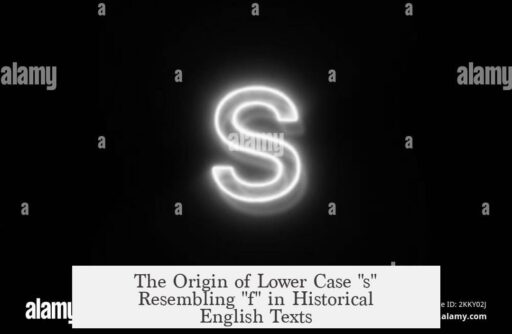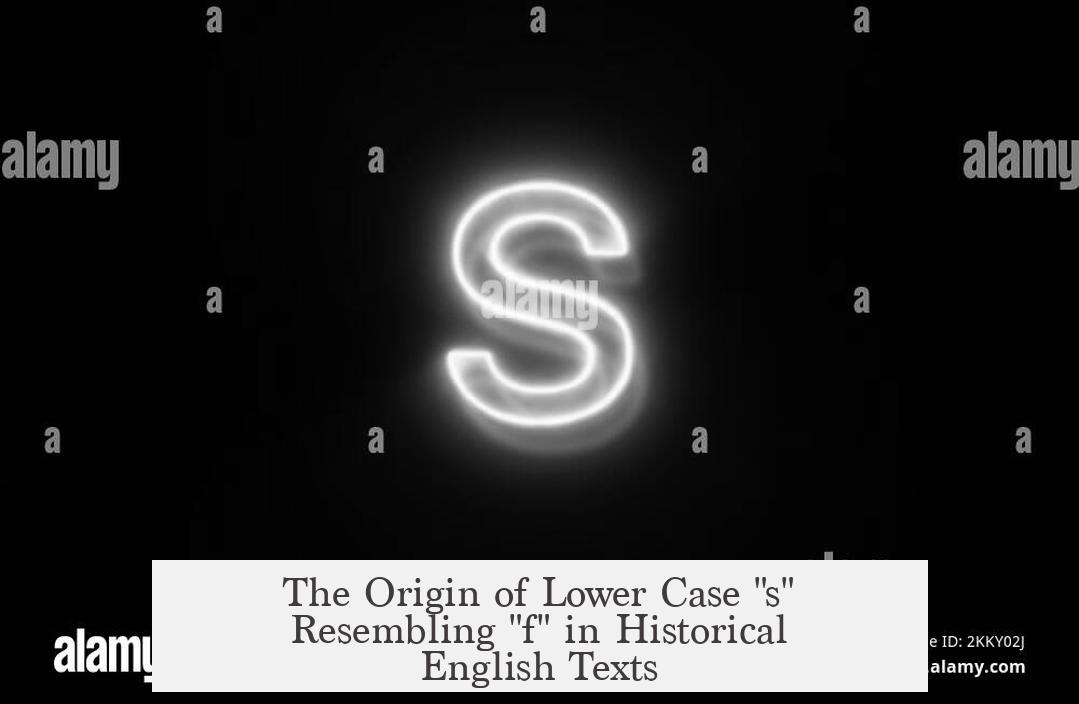The lowercase “s” appears as “f” in older English documents because it is actually a different character called the “long s.” This letter, resembling a modern “f” but without a complete crossbar, originates from ancient Roman cursive scripts and was widely used in medieval and early modern writing.
The “long s” evolved from a Roman cursive letter that featured an elongated upper stroke slanting upwards and to the right. This form was adopted into the half-uncial script, used across Europe between the 4th and 8th centuries. In this script, the “long s” took on an appearance very similar to the letter “f,” with a vertical stroke and a small left hook. Later, during the 9th century, the “long s” was incorporated into the Carolingian minuscule, a script standardizing writing across Europe by blending Insular and Merovingian styles.
Both the “long s” and the familiar round “s” coexisted in writing. Typically, the “long s” appeared at the start and middle of words, whereas the round “s” occurred at word endings. This usage mirrors the Greek sigma system, where σ appears in initial and medial positions and ς at the end.
This writing style remained stable for centuries, as it was considered efficient and clear. Medieval documents from different European languages showed similar handwriting styles because of this script’s dominance. The “long s” persisted well into the 18th century, only falling out of favor during that time, partly due to changing tastes after the French Revolution. Copies of texts with the “long s” continued sporadically until the early 19th century, and in Germany, it survived in handwriting until the 1970s. Its presence in stylized inscriptions still occasionally appears today.
It is important not to confuse the “long s” with the German Eszett (ß), which looks different and comes from a combination of the long s and the letter “z.”
| Aspect | Description |
|---|---|
| Origin | Derived from Roman cursive script |
| Appearance | Resembles “f” without full crossbar |
| Usage | Initial and medial positions in words |
| Endings | Round “s” more common |
| Decline | Phased out in late 18th and early 19th centuries |
- The “long s” looks like an “f” but is a distinct letter.
- It developed from Roman cursive scripts and medieval handwriting.
- Used mainly in the first and middle parts of words.
- Coexisted with the round “s,” which appeared at word endings.
- Fell out of use during the 18th century but lasted longer in some regions.
- Not to be confused with the German Eszett (ß), a separate letter.




